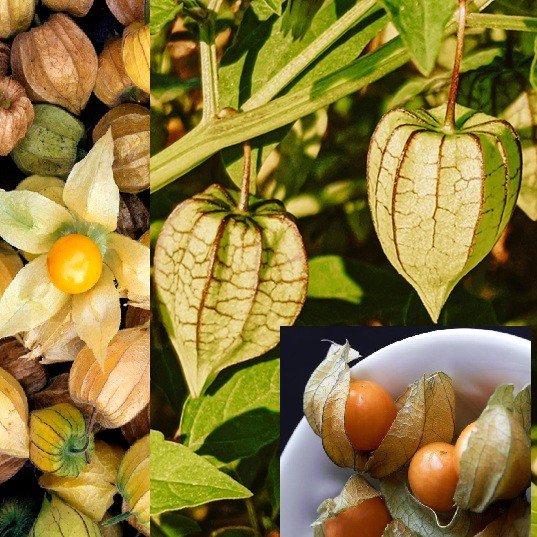Cape Gooseberry (Rasbhari) Fruit Seeds – Grow Your Own Sweet & Tangy Superfruit
Cape Gooseberry (Physalis peruviana), also known as Rasbhari, Golden Berry, or Peruvian Ground Cherry, is a nutrient-rich fruit packed with antioxidants, vitamins, and minerals. This easy-to-grow plant produces small, round, golden-orange fruits enclosed in a delicate, papery husk. The fruit has a sweet and tangy flavor, making it perfect for fresh consumption, jams, desserts, and salads.
Product Details:
Botanical Name: Physalis peruviana
Common Name: Cape Gooseberry, Rasbhari, Golden Berry, Peruvian Ground Cherry
Plant Type: Perennial in warm climates, annual in colder regions
Fruit Color: Golden yellow to deep orange
Taste: Sweet, tangy, and slightly citrusy
Sunlight Requirement: Full sun (at least 6–8 hours per day)
Soil Preference: Well-drained, sandy or loamy soil with pH 5.5–7.5
Water Requirement: Moderate; prefers evenly moist soil but not waterlogged
Planting Season: Spring to early summer
Harvesting Season: 70–90 days after planting
Indoor/Outdoor: Suitable for outdoor gardens, pots, containers, and greenhouse cultivation
Plant Height: 2 to 4 feet tall
Features & Benefits:
✅ Rich in Nutrients – High in Vitamin C, Vitamin A, and antioxidants
✅ Delicious & Versatile – Eat fresh, dried, or use in desserts, jams, and smoothies
✅ Easy to Grow – Thrives in warm climates with minimal maintenance
✅ High Yielding – Produces numerous sweet, tangy fruits throughout the season
✅ Attractive & Unique – Decorative papery husks make them visually appealing
✅ Drought-Tolerant – Requires moderate watering once established
✅ Pest & Disease Resistant – Naturally resistant to many common pests
Planting Instructions:
Soil Preparation: Use well-draining soil enriched with organic compost.
Sowing Seeds: Plant seeds ¼ inch deep in seed trays or directly in the garden.
Watering: Keep soil evenly moist until germination (7–14 days).
Sunlight: Ensure full sun exposure for optimal growth and fruit production.
Transplanting: When seedlings reach 4–6 inches tall, transplant them to their final location.
Support: Provide stakes or trellises for better plant structure and airflow.
Ideal Growing Conditions:
Climate: Best suited for warm and tropical regions
Temperature Range: 18°C–30°C (65°F–86°F)
Fertilization: Use organic compost or balanced fertilizer every 3–4 weeks
Pruning: Trim excess branches to improve airflow and fruit production
Common Uses of Cape Gooseberry (Rasbhari) Fruit:
🍽 Fresh Eating – Enjoy as a healthy snack with a sweet-tangy taste
🍹 Smoothies & Juices – Adds a unique flavor and high nutritional value
🥧 Jams & Desserts – Perfect for making jams, jellies, and pies
🥗 Salads & Garnishing – Enhances the flavor of fruit and vegetable salads
🌱 Dried as a Superfood – Used as a healthy dried fruit like raisins
Maintenance Tips:
Regular Watering: Keep soil slightly moist but avoid overwatering
Mulching: Helps retain moisture and prevents weed growth
Pest Control: Generally pest-resistant but keep an eye out for aphids and whiteflies
Harvesting: Pick fruits when the husks turn brown and papery, and the fruit is golden yellow
Cape Gooseberry (Rasbhari) is a nutrient-rich, easy-to-grow fruit that is delicious, versatile, and packed with health benefits. Whether grown in a home garden, pots, or containers, these high-yielding plants will reward you with sweet and tangy berries that can be enjoyed fresh or in various recipes. 🌿🍊






















Reviews
There are no reviews yet.